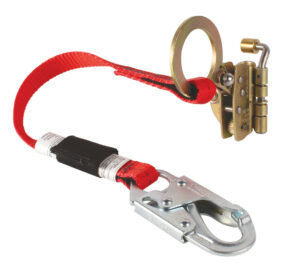Fall Arresters & Vertical Lifelines
The new CSA Z259.2.5-17 Fall Arresters and Vertical Lifelines came into effect on June 1, 2019 and supersedes the previous 2012 edition. Rope Grabs must now be manufactured to meet the requirements of the new CSA standard.

The new 2019 CSA standard now requires manufacturers to make a 76.2 cm (30 in.) lanyard integral to the Rope Grab unit. In the 2012 version of the standard, the requirement of the 76.2cm (30in.) or less lanyard was there, but the lanyard did not have to be made integral to the rope grab itself.
Rope grabs should always be matched to the lifeline this will ensure the mobility of the rope grab along the lifeline. A rope grab used with an incompatible lifeline could prevent the rope grab from being pulled along while a worker is climbing. All Rope grabs and vertical lifelines are CSA certified together as a pair. By mixing manufactures, the CSA certification becomes void. Simply put the rope grab might not function properly on a lifeline that was not matched to the rope grab when it was manufactured.
Although the 2012 standard did advise workers to use a lanyard that was less than 76.2cm (30in.) when used with a rope grab and vertical lifeline, lots of workers continued and still continue to use a 1.83 metre (6 foot) lanyard. The risk when using a 1.83 metre (6 ft) lanyard with an automatic rope grab is that there is a risk of a potential free fall that can be 3 to 3.6 metres (10-12 ft) if the trailing rope grab is positioned near the users feet when a fall occurs. This situation is likely to occur during work tasks that involve roofing applications. It is important to keep in mind that even though the lanyard has a built in energy absorber the product would not have been designed to sustain arresting forces created by a free fall of 3 to 3.6 metres (10-12 ft). Manufacturers are now required to design in the correct 76.2cm (30in.) length limit. The design will ensure that a worker’s free fall distance will remain within the products design parameters.




